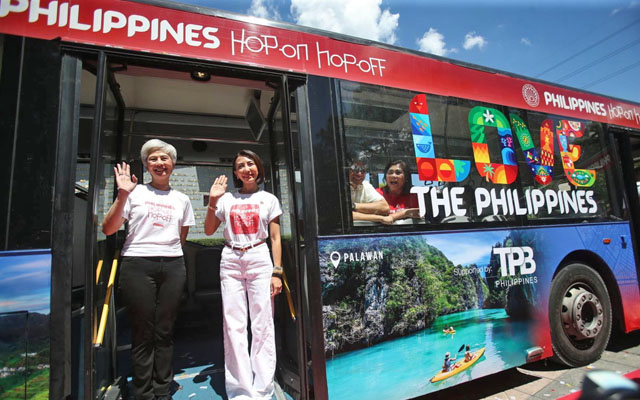Understanding the Function of Transportation Marketing in Enhancing Brand Name Visibility and Customer Engagement
Transit advertising and marketing has arised as a critical aspect in the marketing landscape, providing distinct opportunities for brands to boost their visibility and engage customers properly. With the ability to reach a varied and restricted target market during their everyday commutes, these marketing approaches are not merely regarding exposure; they have to do with creating meaningful connections with prospective consumers. As we discover the multifaceted benefits and ingenious techniques within transportation advertising and marketing, it becomes necessary to take into consideration how these elements collectively influence consumer understanding and habits, questioning about their long-lasting influence on brand loyalty.
Definition of Transit Marketing
Transit marketing refers to the technique of advertising items, solutions, or brand names through ads put around public transport systems. This kind of advertising and marketing incorporates a selection of positionings, consisting of posters on trains and buses, electronic displays at transportation stations, and wraps on the outside of vehicles. It intends to reach a diverse target market, taking advantage of the high foot web traffic connected with public transportation.
Transit advertising is purposefully placed to capture the focus of commuters, that usually spend considerable time traveling or waiting. By incorporating ads right into the everyday routines of individuals, brand names can produce a lasting impact and foster brand acknowledgment. The medium is specifically efficient in city atmospheres, where public transport is a main mode of traveling.
Additionally, transportation marketing can promote local targeting, allowing organizations to reach specific demographics based upon transit courses and terminal places. As urban populations expand and making use of public transportation increases, this marketing approach has gotten prominence as a crucial part of integrated advertising approaches. The dynamic nature of transit advertising and marketing, combined with its ability to involve customers in a captive atmosphere, emphasizes its importance in modern advertising and marketing practices.
Benefits of Transit Marketing
The performance of transit advertising exists in its capacity to supply a wide range of benefits to brand names looking for to enhance exposure and interaction. Among the key benefits is the extensive reach it uses; transportation ads can efficiently target varied demographics across metropolitan locations, getting to both commuters and pedestrians alike. This broad direct exposure significantly improves brand name recognition.
Another benefit is the high regularity of impressions. As transit cars take a trip along well established paths and stop at several places, they create repetitive exposure that enhances brand name messages. This regularity promotes experience, which is important in consumer decision-making.
Transit advertising is also cost-effective compared to other media platforms. Given its expansive reach and potential for high impressions, brands commonly experience a reduced price per thousand impressions (CPM), optimizing their advertising budget.
Additionally, transportation advertisements can create a sense of community connection. By aligning with local transportation systems, brand names can reverberate with regional audiences and foster a feeling of neighborhood satisfaction. This local strategy improves brand commitment and engagement, making transportation advertising and marketing an engaging option for companies intending to solidify their visibility out there.

Reliable Techniques for Transportation Campaigns
To make the most of the influence of transportation campaigns, brand names ought to utilize calculated planning and implementation tailored to their target audience. First, recognizing the market features of the audience making use of public transit is vital. This allows brand names to develop customized messaging that reverberates with potential clients.
Following, selecting the ideal transportation mediums is vital. Whether making use of bus wraps, train posters, or electronic displays, each medium has special benefits that can enhance exposure. For example, vibrant visuals on bus covers can stand out, while digital advertisements can be upgraded frequently resource to show prompt promos.
Furthermore, integrating a natural branding approach across transit systems guarantees consistency and enhances the brand name's identification. Making use of memorable taglines and captivating layouts will certainly reinforce brand recall among commuters.
By employing these strategies, brand names can properly harness the possibility of transportation marketing, cultivating higher understanding and connection with their target audience. Eventually, a well-executed transportation project can drive significant growth in brand presence and consumer engagement.

Measuring Influence and Involvement
In link examining the effectiveness of transit marketing campaign, precise measurement of effect and engagement is essential for brand names seeking to maximize their advertising strategies. Metrics such as reach, regularity, and perceptions provide fundamental data to analyze exposure. Analyzing these variables assists identify the amount of potential customers are revealed to the ads throughout their everyday commutes.
Involvement can be additional gauged with consumer interactions, such as website web traffic, social networks points out, and direct feedbacks to calls-to-action included in the ads. Utilizing tools like QR codes or one-of-a-kind Links can assist in tracking of customer habits directly connected to transit campaigns. Surveys and responses systems also work as important techniques to gather qualitative information on consumer assumptions and recall of the advertisement.
Additionally, progressed analytics and attribution models can associate transportation direct exposure with subsequent getting behavior, using understandings right into the return on investment. By employing a detailed strategy that incorporates quantitative and qualitative steps, brands can establish a nuanced understanding of their transportation advertising and marketing influence. Inevitably, this data-driven strategy enables brands to refine their projects, guaranteeing they reverberate effectively with target go right here audiences and enhance overall brand visibility.
Case Research Studies of Successful Campaigns
Successful transit marketing campaign function as engaging instances of just how efficient methods can raise brand exposure and engagement. Transit Advertising Philippines. One noteworthy situation is the "I Love New York" project, which changed the city's photo and brought in numerous vacationers. By using train advertisements, signboards, and bus wraps, the campaign developed a strong, cohesive brand name identification, leading to a considerable uptick in tourism and neighborhood organization patronage
One more exemplary project is Coca-Cola's "Share a Coke" effort, which leveraged transit advertising to individualize the brand experience. By featuring preferred names on marketing materials throughout different transit systems, Coca-Cola promoted a deeper psychological connection with customers, urging them to share their experiences on social networks.
Additionally, the "Got Milk?" campaign properly used mass transit advertisements to get to a broad target market, enhancing the message of the relevance of milk in a well balanced diet plan. The project saw a quantifiable rise in milk usage in target demographics.
These case research studies show that when executed attentively, transportation marketing can significantly enhance brand visibility, foster customer engagement, and drive quantifiable results, showing its vital function in modern advertising approaches. - Transit Advertising Philippines
Final Thought
Finally, transit advertising and marketing functions as an essential tool for boosting brand presence and fostering customer engagement. By making use of purposefully placed promotions within public transport systems, brands can properly reach diverse audiences and enhance recognition with regular direct exposure. The implementation of targeted messaging and innovative techniques additionally intensifies the impact of transit campaigns. Ultimately, the capability to determine interaction and examine effective study underscores the effectiveness of transit advertising in driving brand loyalty and consumer interactions.
Transportation advertising and marketing has actually arised as a crucial aspect in the advertising and marketing landscape, offering one-of-a-kind chances for brands to elevate their presence and involve consumers effectively.In addition, transportation marketing can help with localized targeting, permitting services to reach details demographics based on transportation routes and terminal places.In assessing the performance of transportation advertising projects, precise measurement of influence and interaction is vital for brands looking for to enhance their marketing approaches.Successful transit advertising and marketing campaigns offer as compelling examples of exactly how effective approaches can boost brand name visibility and involvement.In final thought, transit marketing serves as an essential tool for boosting brand presence and fostering customer engagement.
Comments on “Transit Advertising Philippines: Get To Thousands of Commuters Daily”